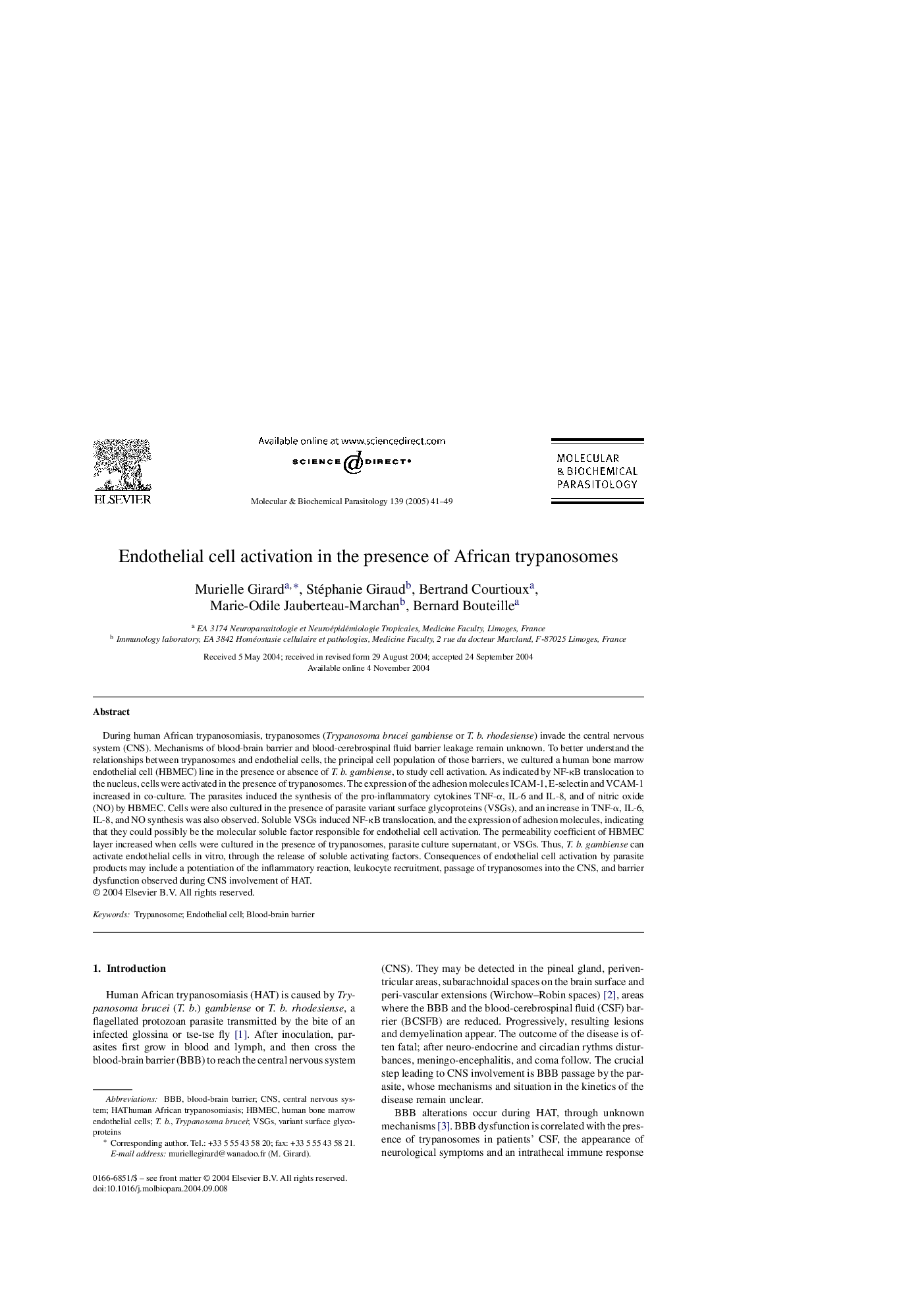| Article ID | Journal | Published Year | Pages | File Type |
|---|---|---|---|---|
| 9140156 | Molecular and Biochemical Parasitology | 2005 | 9 Pages |
Abstract
During human African trypanosomiasis, trypanosomes (Trypanosoma brucei gambiense or T. b. rhodesiense) invade the central nervous system (CNS). Mechanisms of blood-brain barrier and blood-cerebrospinal fluid barrier leakage remain unknown. To better understand the relationships between trypanosomes and endothelial cells, the principal cell population of those barriers, we cultured a human bone marrow endothelial cell (HBMEC) line in the presence or absence of T. b. gambiense, to study cell activation. As indicated by NF-κB translocation to the nucleus, cells were activated in the presence of trypanosomes. The expression of the adhesion molecules ICAM-1, E-selectin and VCAM-1 increased in co-culture. The parasites induced the synthesis of the pro-inflammatory cytokines TNF-α, IL-6 and IL-8, and of nitric oxide (NO) by HBMEC. Cells were also cultured in the presence of parasite variant surface glycoproteins (VSGs), and an increase in TNF-α, IL-6, IL-8, and NO synthesis was also observed. Soluble VSGs induced NF-κB translocation, and the expression of adhesion molecules, indicating that they could possibly be the molecular soluble factor responsible for endothelial cell activation. The permeability coefficient of HBMEC layer increased when cells were cultured in the presence of trypanosomes, parasite culture supernatant, or VSGs. Thus, T. b. gambiense can activate endothelial cells in vitro, through the release of soluble activating factors. Consequences of endothelial cell activation by parasite products may include a potentiation of the inflammatory reaction, leukocyte recruitment, passage of trypanosomes into the CNS, and barrier dysfunction observed during CNS involvement of HAT.
Keywords
Related Topics
Life Sciences
Biochemistry, Genetics and Molecular Biology
Molecular Biology
Authors
Murielle Girard, Stéphanie Giraud, Bertrand Courtioux, Marie-Odile Jauberteau-Marchan, Bernard Bouteille,
